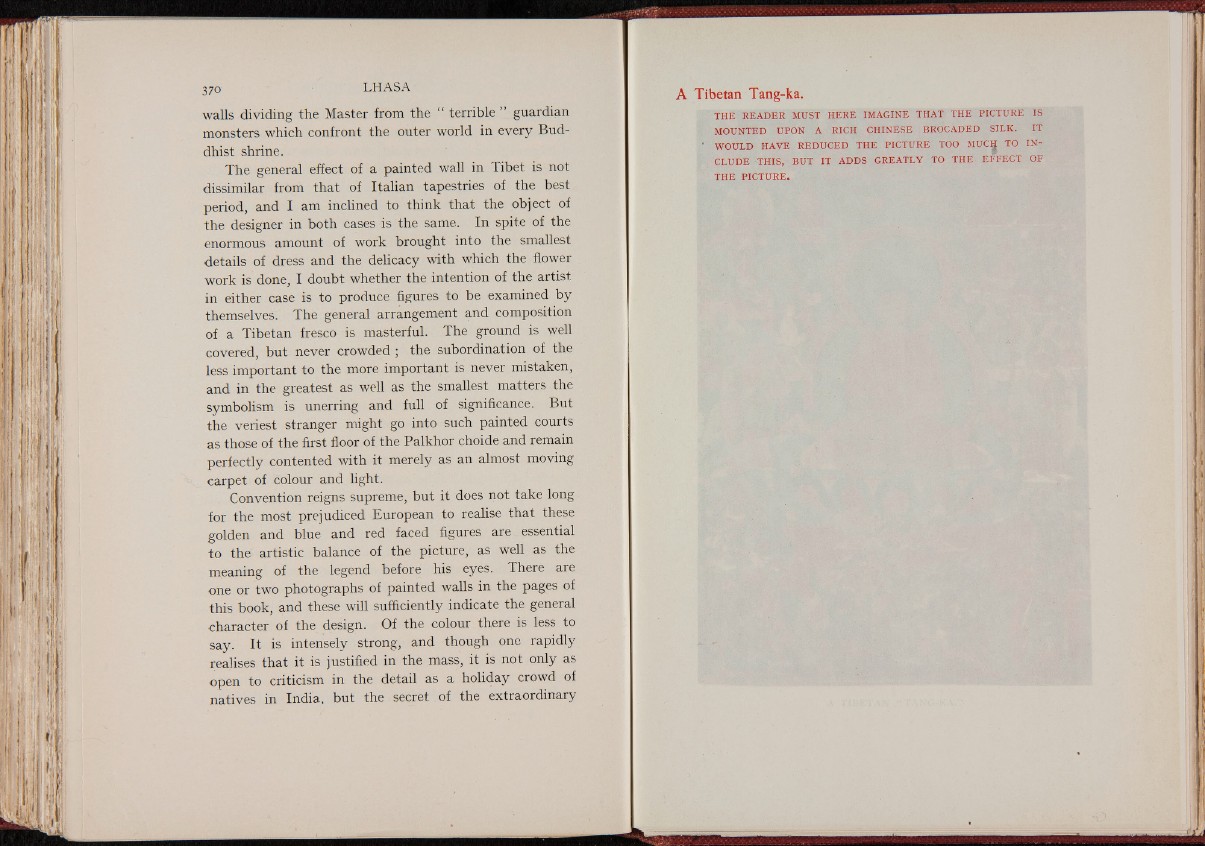
walls dividing the Master from the I terrible ” guardian
monsters which confront the outer world in every Buddhist
shrine.
The general effect of a painted wall in Tibet is not
dissimilar from that of Italian tapestries of the best
period, and I am inclined to think that the object of
the designer in both cases is the same. In spite of the
enormous amount of work brought into the smallest
details of dress and the delicacy with which the flower
work is done, I doubt whether the intention of the artist
in either case is to produce figures to be examined by
themselves. The general arrangement and composition
of a Tibetan fresco is masterful. The ground is well
covered, but never crowded ; the subordination of the
less important to the more important is never mistaken,
and in the greatest as well as the smallest matters the
symbolism is unerring and full of significance. But
the veriest stranger might go into such painted courts
as those of the first floor of the Palkhor choide and remain
perfectly contented with it merely as an almost moving
carpet of colour and light.
Convention reigns supreme, but it does not take long
for the most prejudiced European to realise that these
golden and blue and red faced figures are essential
to the artistic balance of the picture, as well as the
meaning of the legend before his eyes. There are
one or two photographs of painted walls in the pages of
this book, and these will sufficiently indicate the general
■character of the design. Of the colour there is less to
say. It is intensely strong, and though one rapidly
realises that it is justified in the mass, it is not only as
■open to criticism in the detail as a holiday crowd of
natives in India, but the secret of the extraordinary
THE R E A D E R MUST HERE IMAG INE TH A T THE P ICTU R E IS
MOUNTED UPON A RICH CH IN E SE BRO CAD ED S IL K . IT
' WOULD HA V E R ED U C ED TH E P IC TU R E TOO MUCH TO IN C
LU D E TH IS, BU T IT AD D S G R E A T L Y TO THE E F F E C T OF
THE P IC TU R E .